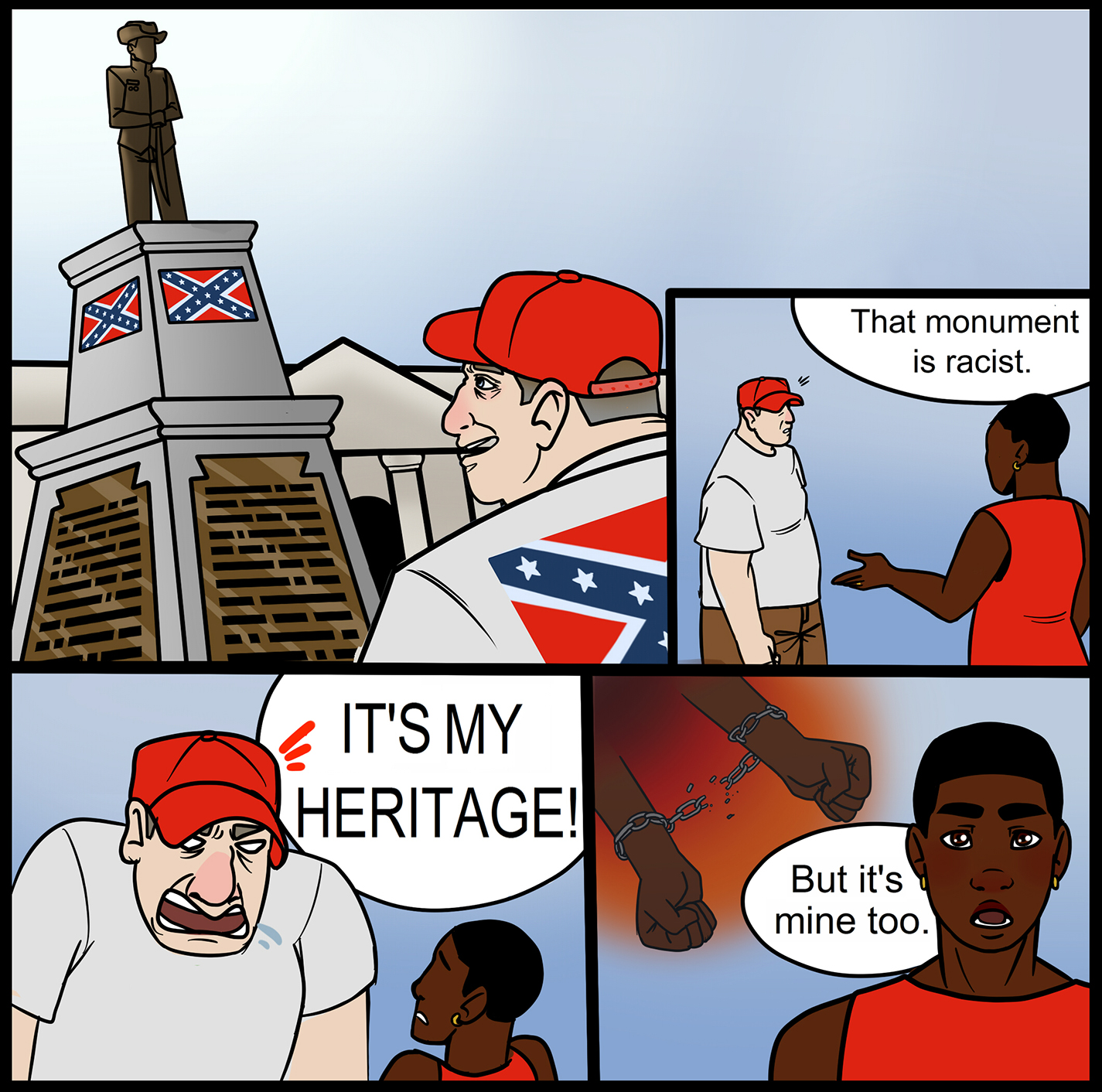Confederate statues and memorials are falling all around the country following the violence that took place in Charlottesville, Virginia, earlier this month.
Communications and external affairs vice chancellor Reginald Gates said TCC, to his knowledge, does not have any Confederate statues or memorials on any of its campuses or properties.
But that doesn’t mean the TCC community is exempt from this conversation. Confederate statues and memorials can be found around the Dallas-Fort Worth area, with one memorial located outside the Tarrant County courthouse a couple blocks from TR Campus.
The removal of these monuments is long overdue. However, some people fear removing Confederate statues and memorials is an attempt to erase the past and run the risk of history repeating itself.
But, those calling for the removal of these statues are not demanding all the monuments be melted down and completely destroyed. A lot of the ones that have already been removed were relocated to educational spaces where they can be contextualized and studied as historical objects.
The University of Texas at Austin did this with the three statues removed from its campus earlier this month. They were moved to the university’s Briscoe Center for American History.
The center collects, preserves and shares historical evidence that fosters exploration of America’s past. Right now, the center has no plans to exhibit the statues, but the relocation of them to the material culture collection of historical archives gives scholars and students the opportunity to study these artifacts without continuing to glorify the Confederacy.
It’s not possible for every Confederate statue and memorial to be relocated to a museum or artifact archive and they don’t all need to be preserved, but they don’t all have to be melted down either.
Another option to put them in their proper historical context is to keep the monuments in place and add well researched explanatory plaques.
These statues commemorate men who violated their oaths of allegiance to the U.S. and endorse their racist ideals that led to the Confederacy and the Civil War.
Sure, it’s possible some were erected to honor fallen soldiers and leaders of the Confederacy who went on to do other things, but the majority didn’t go up until long after the Civil War ended and the Union was restored.
In fact, the timeline of Confederate monuments shows many of them went up when white Southerners attempted to disenfranchise African-Americans during the Jim Crow era and again in resistance to the Civil Rights movement in the 1950s and ‘60s.
Creating Confederate monuments and placing them in public places of honor was an attempt to rewrite history. These boastful statues of rebel leaders push an alternative narrative that claims the Civil War was about liberty and states rights, not slavery. Tearing them down isn’t about rewriting history. It’s about America no longer silently endorsing the ideology, prejudices and actions of these white supremacists.
Monuments represent cultural and political messages. They symbolize the principles and worldviews of the spaces they occupy and the people of the city, state and country allowing these monuments to stay.
Germany has no statues of Hitler or Nazi generals. The Nazi symbol is outlawed, and people get fined for doing the Nazi salute. But here in America, Confederate flags and statues of men who led an immoral, bloody rebellion litter the South. Germany has completely denounced Nazi views while America, especially the southern parts of the country, continue to glorify Confederate soldiers and leaders and what they stood for: slavery, white supremacy and hate.
For those that think removing these statues and memorials is an attempt to erase American history, plenty of books and history museums will never let the country forget about this particularly dark chapter in its past.
So really the question isn’t should we remove these statues, it’s why haven’t we already taken them down?

